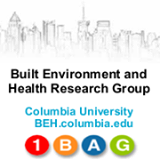The BEH group uses a series of epidemiological studies and health surveys to study neighborhood effects on health. We have also developed a rich GIS archive of geospatial data describing built and social environment conditions in NYC. We are building similar GIS data archives for Atlanta and Detroit. Several of the data sets are highlighted below.
Epidemiological Data Sets
- NYC Cancer Cohort: A health survey of residents of the NYC metropolitan area, during which height and weight were measured. Residential address data from this survey have been geocoded.
- NYC Community Health Survey: An annual ~10,000 person random digit dial telephone health survey of residents of NYC, conducted by the NYC Department of Health and Mental Hygiene. We have pooled data from the 2002 to 2006 surveys and, using the respondent’s residential zip code, have linked the survey data to neighborhood measures.
- 2007-2008 NYC FITNESSGRAM: The NYCFITNESSGRAM program measures the height, weight and fitness of NYC public school school children. We have linked the 2007-2008 FITNESSGRAM data from each student to their home Census tract and to their school and have created neighborhood measures for the areas around the schools and for the home Census tracts.
Selected GIS Data sets
- Neighborhood Walkability: Based on urban planning and design literatures we have created a series of measures of walkability for the entire city [1, 2, 3].
- 1990-2010 NETS data: Twenty years of Dunn & Bradstreet business listing data which can be used to describe retail food environments [4], commercial physical activity venues and a multitude of other commercial spaces.
- 2010 Land Cover: Using 2010 LiDAR data we created a high-resolution data set describing land cover in NYC, accurate to 6 inches. These data provide highly detailed measures of the urban forest canopy and green space.
- Safety: We have point level data on car versus pedestrian and car verses cyclist accidents and homicide data from the NYC Police Department [5].
- Park Area and Quality: We have combined data from the NYC Department of Parks & Recreation, Park Inspection Program with park boundary data to measure access to parks and playgrounds, the cleanliness of parks and quality of the playground facilities [6].
- Socioeconomic and Racial/Ethnic Composition: We use the 2000 Census and ongoing American Community Survey data to measure socio-demographic characteristics of neighborhoods. We have used simple measures, such as percent poverty and median household income, and multidimensional measures like the Neighborhood Deprivation Index [7]. We have also developed measures that show the extent to which a neighborhood is an immigrant enclave [8].


